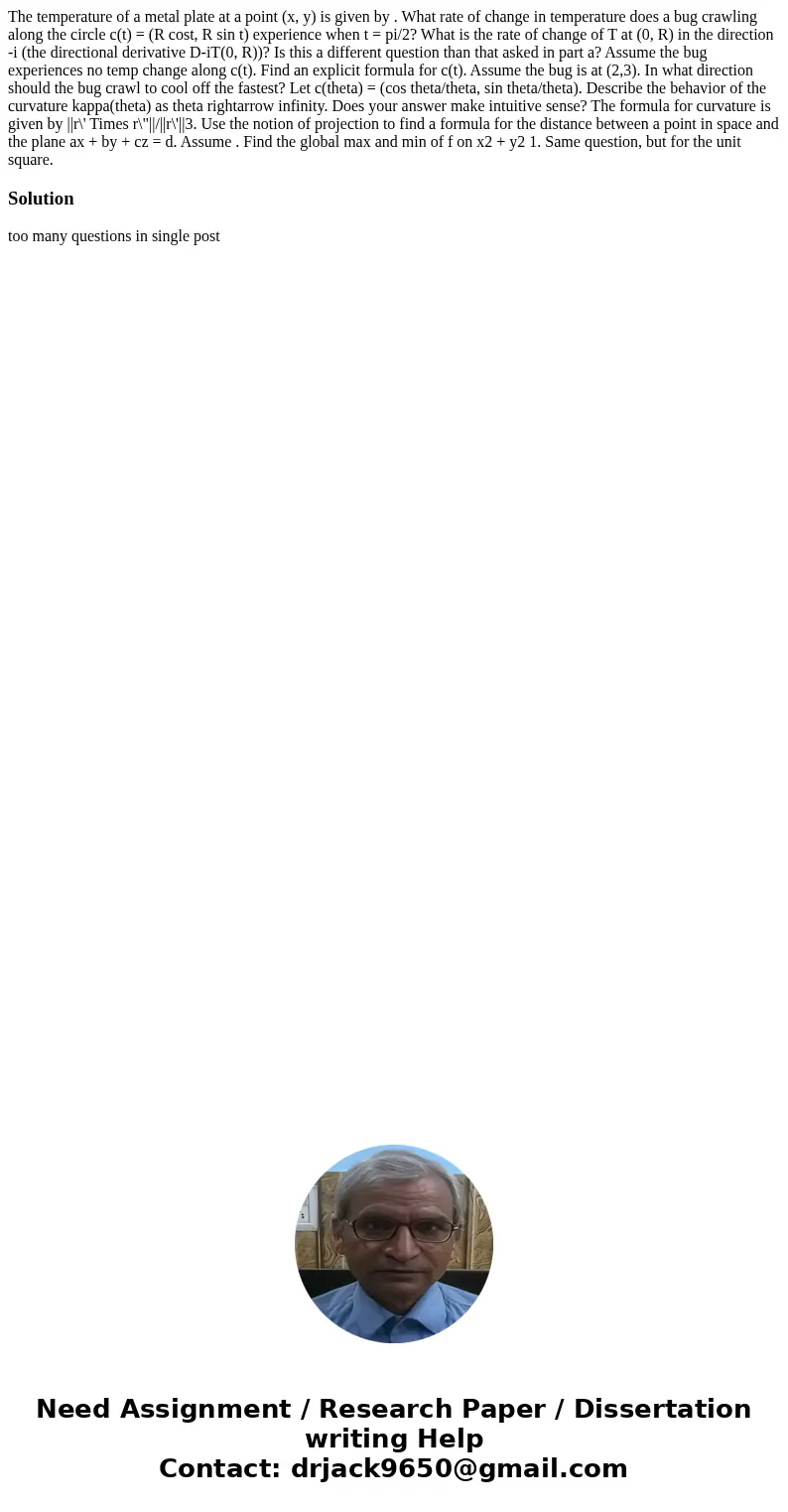The temperature of a metal plate at a point x y is given by
The temperature of a metal plate at a point (x, y) is given by . What rate of change in temperature does a bug crawling along the circle c(t) = (R cost, R sin t) experience when t = pi/2? What is the rate of change of T at (0, R) in the direction -i (the directional derivative D-iT(0, R))? Is this a different question than that asked in part a? Assume the bug experiences no temp change along c(t). Find an explicit formula for c(t). Assume the bug is at (2,3). In what direction should the bug crawl to cool off the fastest? Let c(theta) = (cos theta/theta, sin theta/theta). Describe the behavior of the curvature kappa(theta) as theta rightarrow infinity. Does your answer make intuitive sense? The formula for curvature is given by ||r\' Times r\"||/||r\'||3. Use the notion of projection to find a formula for the distance between a point in space and the plane ax + by + cz = d. Assume . Find the global max and min of f on x2 + y2 1. Same question, but for the unit square.
Solution
too many questions in single post
 Homework Sourse
Homework Sourse